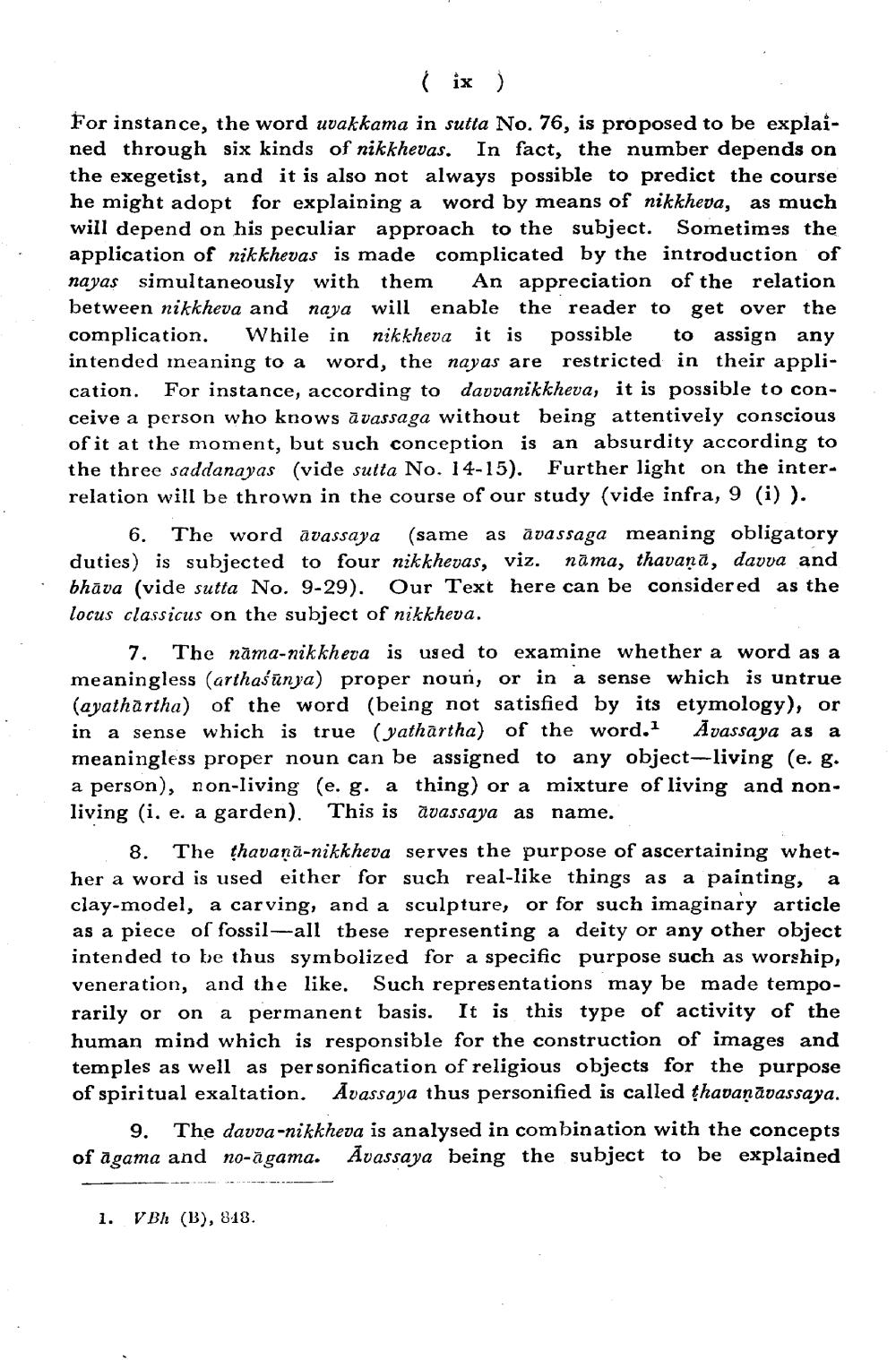________________
For instance, the word uvakkama in sutta No. 76, is proposed to be explained through six kinds of nikkhevas. In fact, the number depends on the exegetist, and it is also not always possible to predict the course he might adopt for explaining a word by means of nikkheva, as much will depend on his peculiar approach to the subject. Sometimes the application of nikkhevas is made complicated by the introduction of nayas simultaneously with them An appreciation of the relation between nikkheva and naya will enable the reader to get over the complication. While in nikkheva it is possible to assign any intended meaning to a word, the nayas are restricted in their application. For instance, according to davvanikkheva, it is possible to conceive a person who knows āvassaga without being attentively conscious of it at the moment, but such conception is an absurdity according to the three saddanayas (vide sutta No. 14-15). Further light on the interrelation will be thrown in the course of our study (vide infra, 9 (i)).
6. The word avassaya (same as āvassaga meaning obligatory duties) is subjected to four nikkhevas, viz. nāma, thavana, davva and bhāva (vide sutta No. 9-29). Our Text here can be considered as the locus classicus on the subject of nikkheva.
7. The nama-nikkhera is used to examine whether a word as a meaningless (arthaśünya) proper noun, or in a sense which is untrue (ayathartha) of the word (being not satisfied by its etymology), or in a sense which is true (yathartha) of the word. Avassaya as a meaningless proper noun can be assigned to any object-living (e. g. a person), non-living (e. g. a thing) or a mixture of living and nonliving (i, e. a garden). This is āvassaya as name.
8. The thavanā-nikkheva serves the purpose of ascertaining whether a word is used either for such real-like things as a painting, a clay-model, a carving, and a sculpture, or for such imaginary article as a piece of fossil-all these representing a deity or any other object intended to be thus symbolized for a specific purpose such as worship, veneration, and the like. Such representations may be made temporarily or on a permanent basis. It is this type of activity of the human mind which is responsible for the construction of images and temples as well as personification of religious objects for the purpose of spiritual exaltation. Avassaya thus personified is called thavanādassaya.
9. The davva-nikkheva is analysed in combination with the concepts of agama and no-agama. Avassaya being the subject to be explained
1. V Bh (B), 848.




